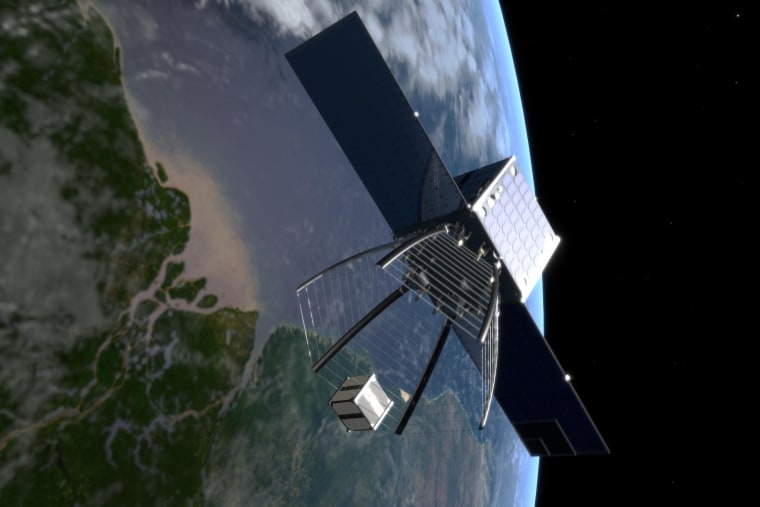A Swiss research project plans to send a spacecraft into low-Earth orbit to "eat" a small satellite, as part of a campaign to clean up the increasing clutter in space. The CleanSpace One project at the Ecole Polytechnique Federale de Lausanne has been working on the problem of how to safely track, collect and dispose of satellites that have outlived their usefulness but aren't going to re-enter the atmosphere any time soon.
Related: Fireball Streaking Over U.S. Southeast Was Probably Just Space Junk
The team decided Monday on the "Pac-Man" technique: a spacecraft with a big conical net extending from the front that closes as soon as it gobbles up the satellite, like the iconic video game character chomping on a dot. Their target is a cubesat named SwissCube, only 4 inches to a side.

"The idea is to have the biggest aperture possible, to increase the chance to eat the cube while it's near the chaser," explained EPFL's Michel Lauria in a video showing the prototype. Care needs to be taken that the cube doesn't bounce back out before the net closes, so exact measurements of position and speed are needed.
Related: Laser-Based Space Junk Tracking Site Planned in Australia
For now, the team will work on creating working models of the prototype Pac-Man system — with luck, Cleanspace One could launch as early as 2018.
